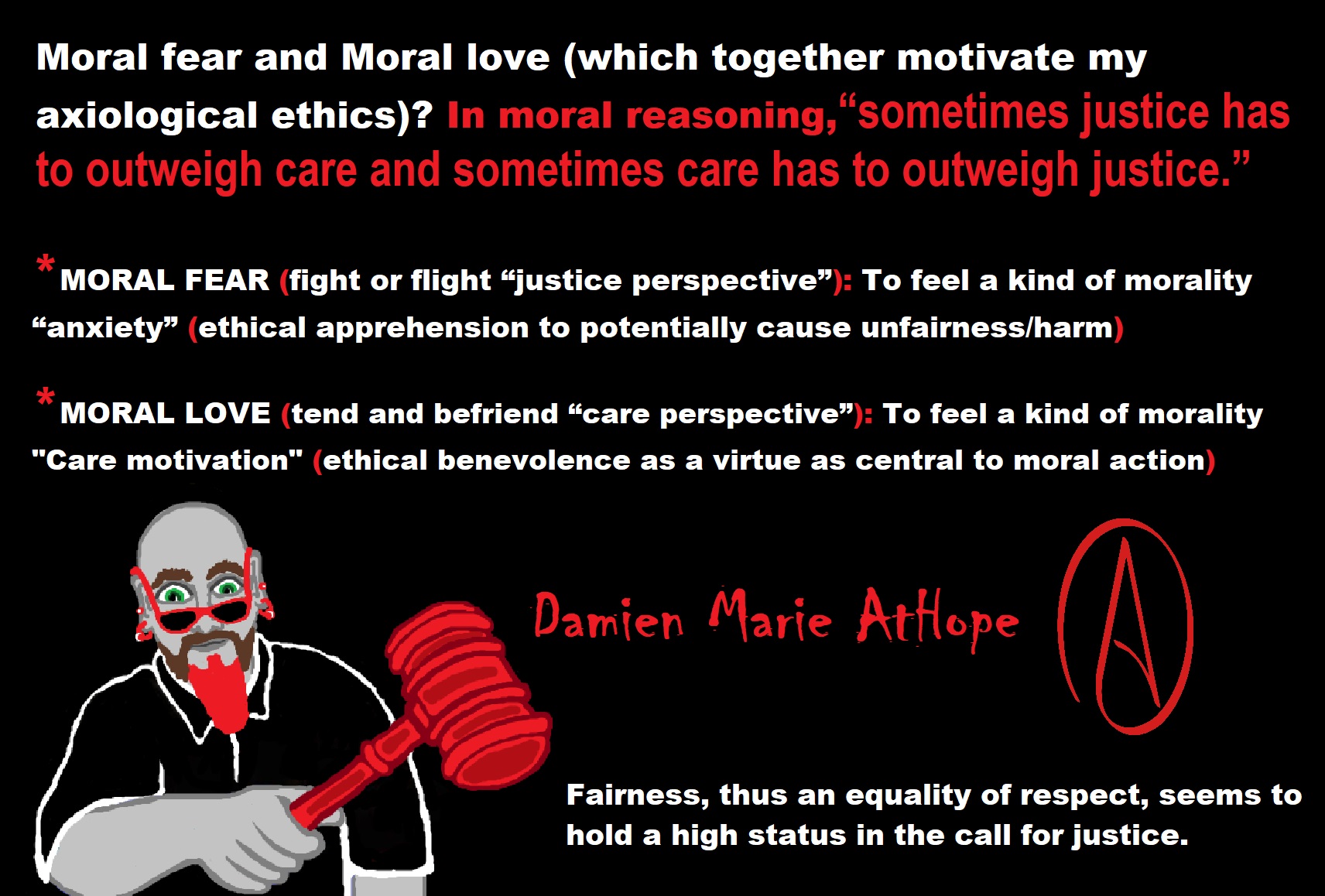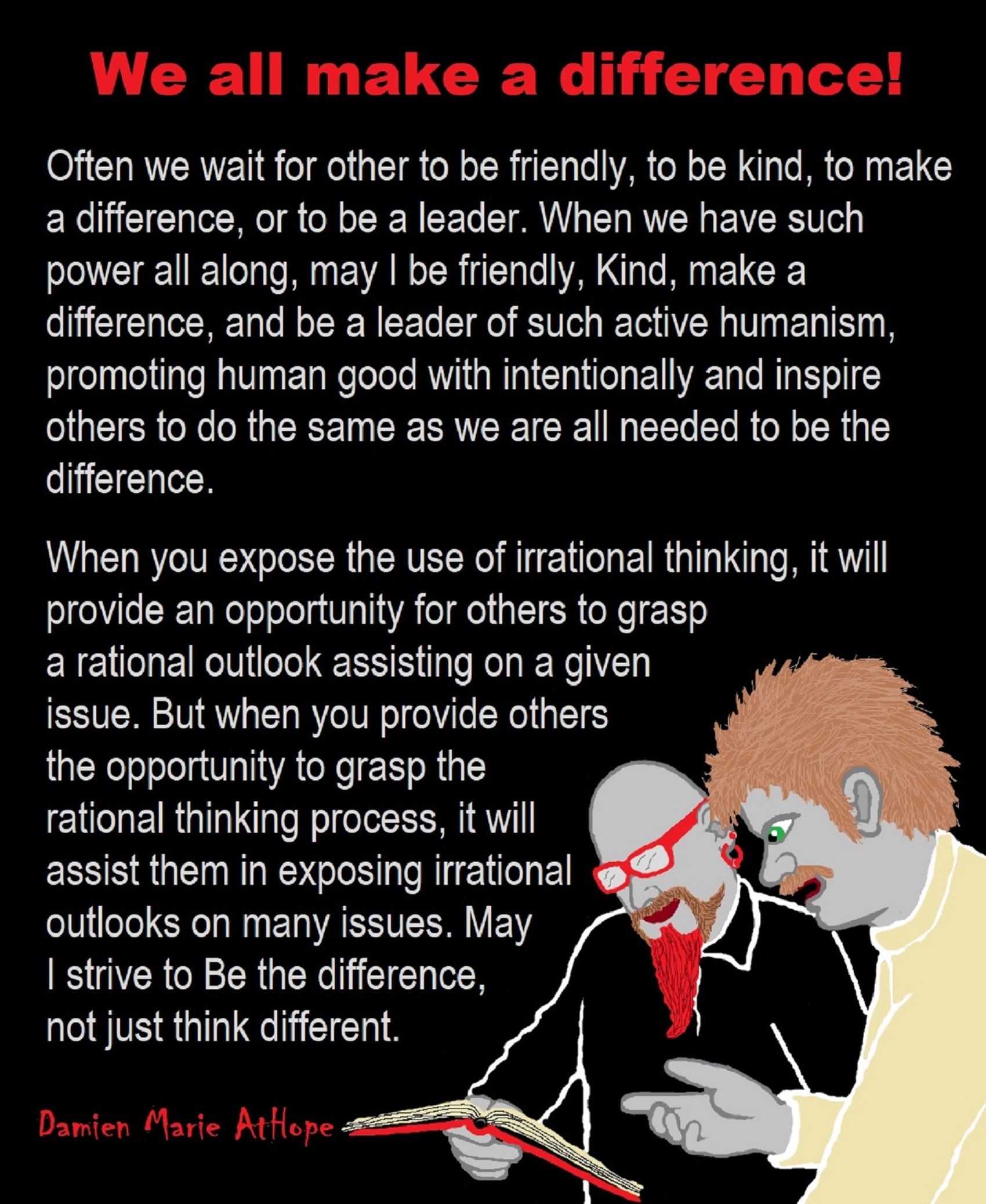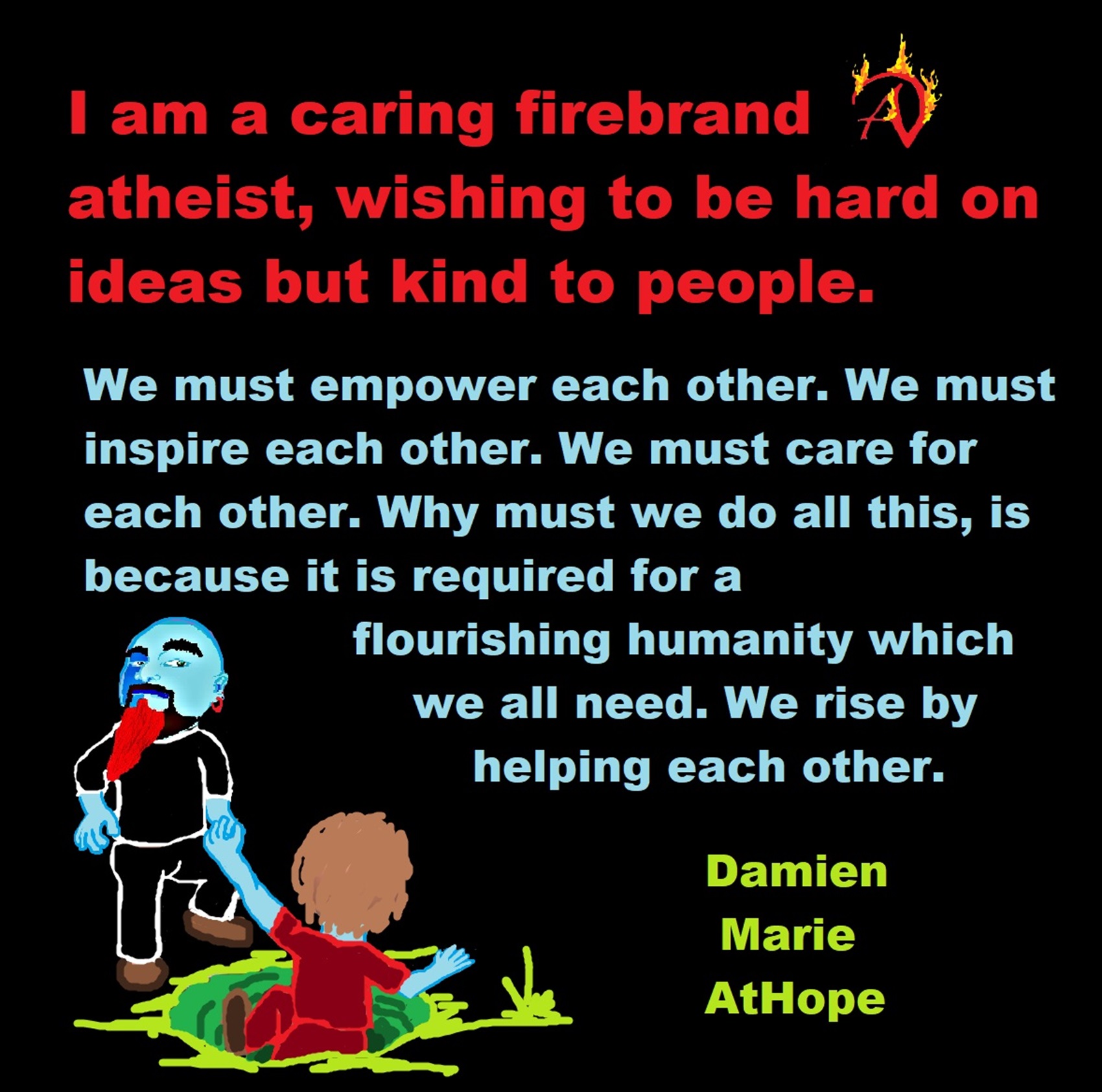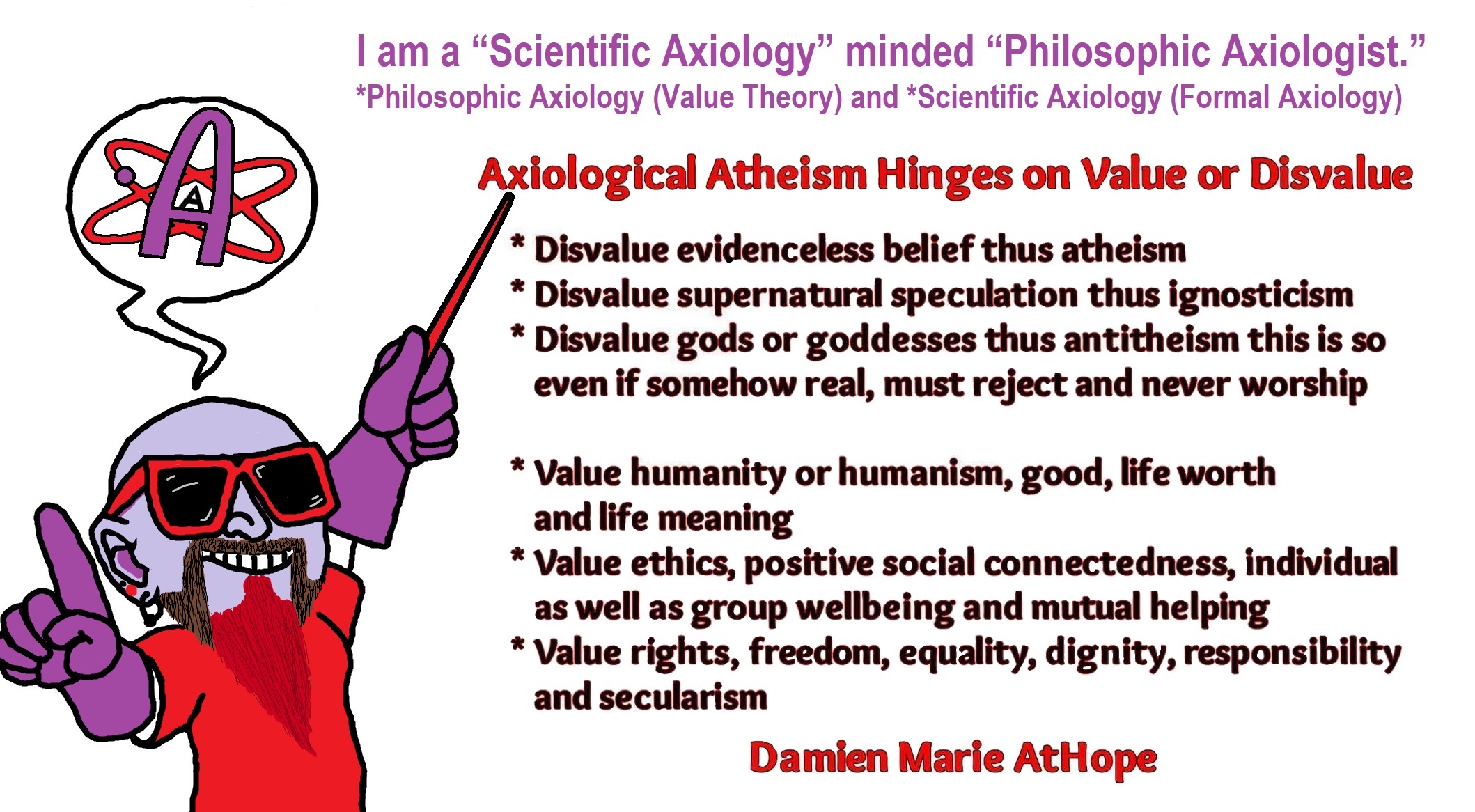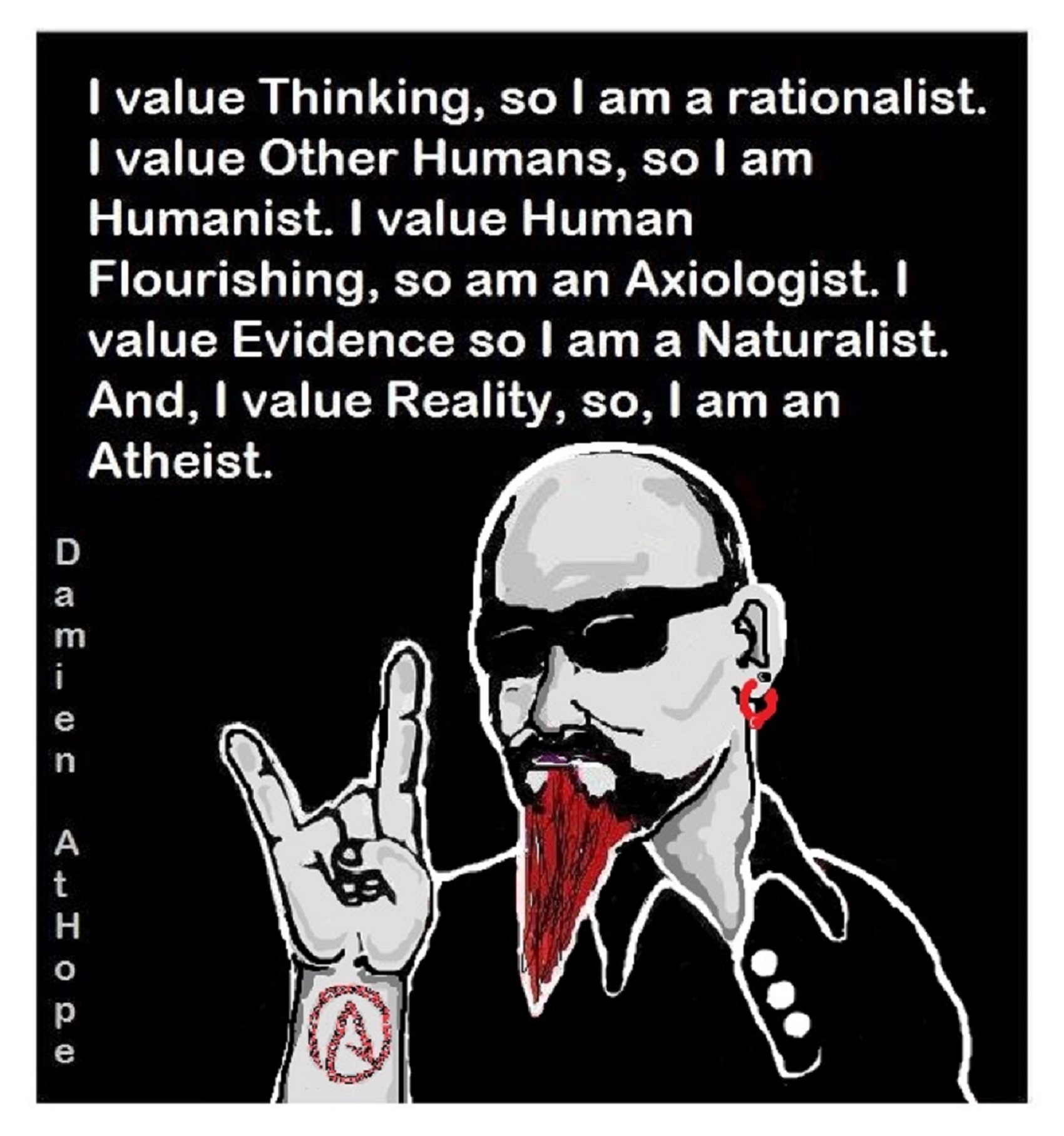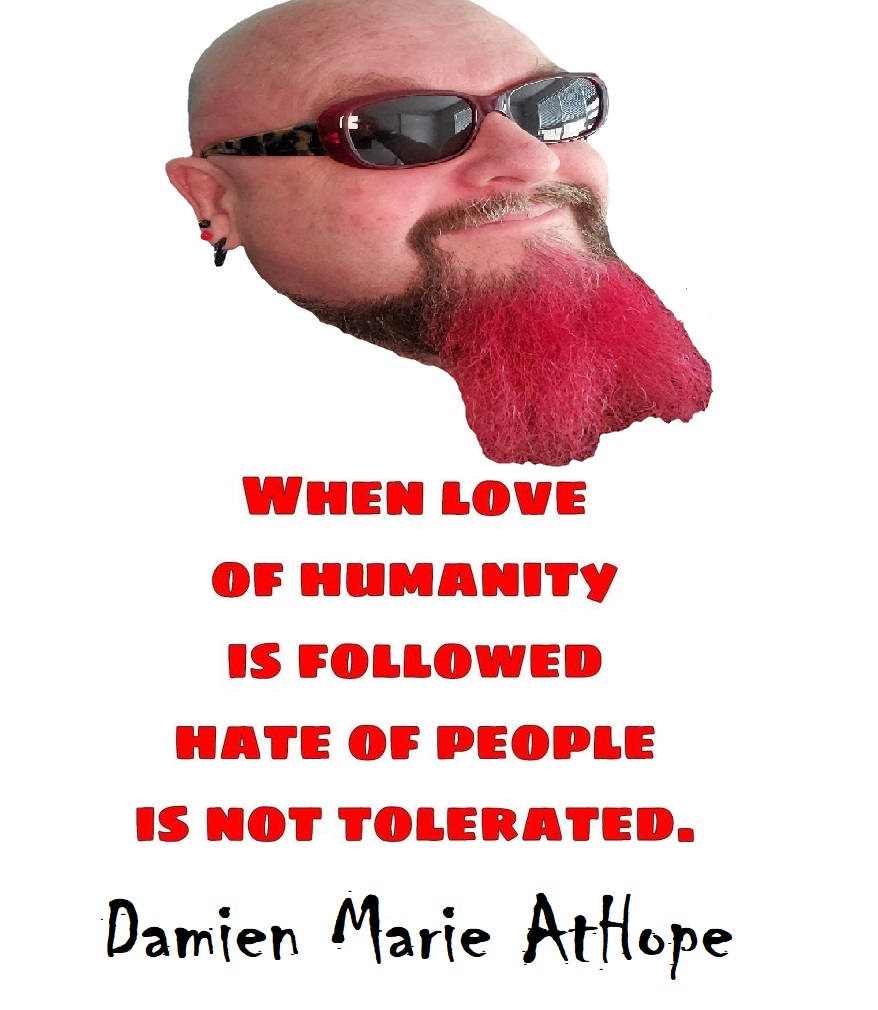
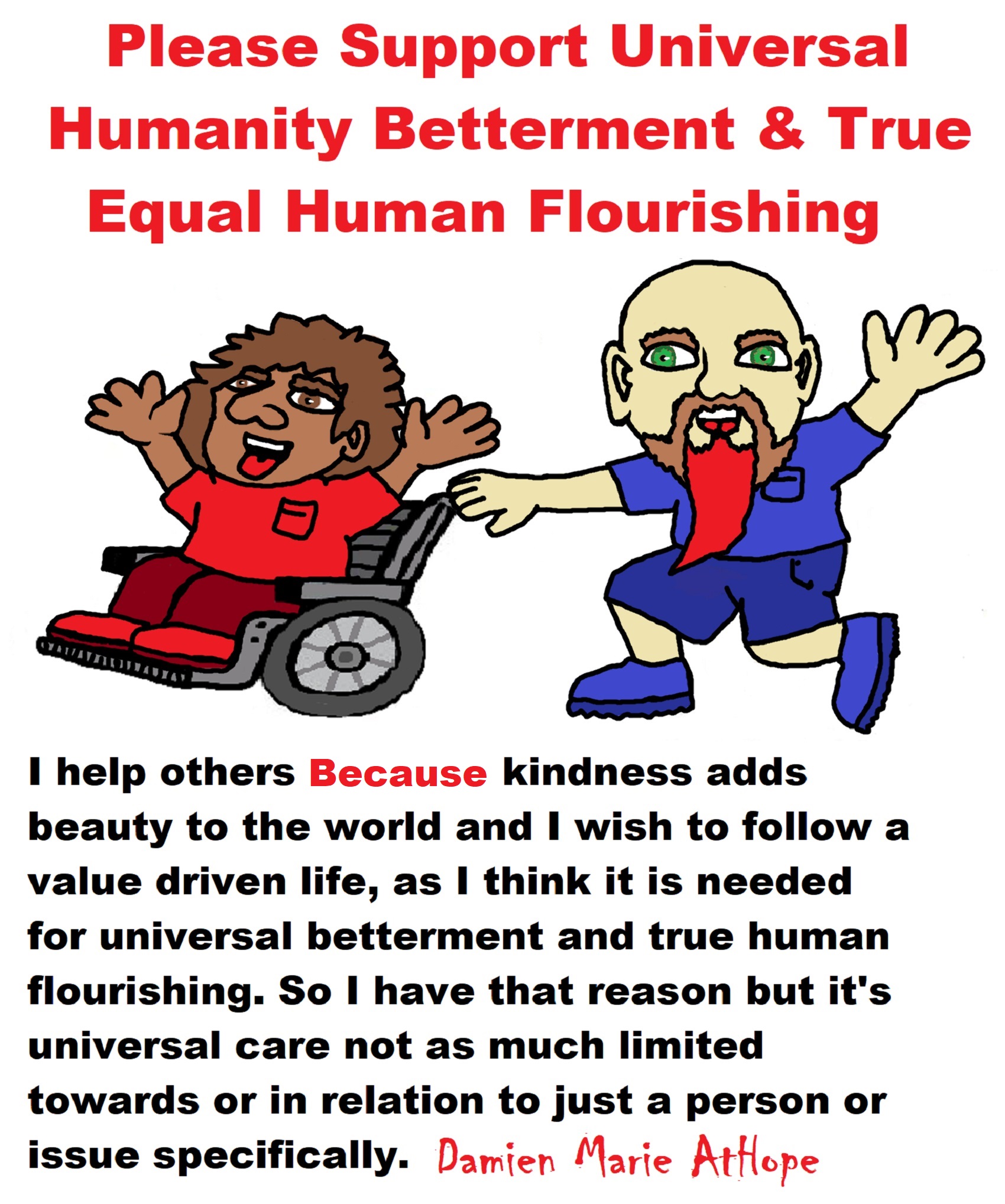
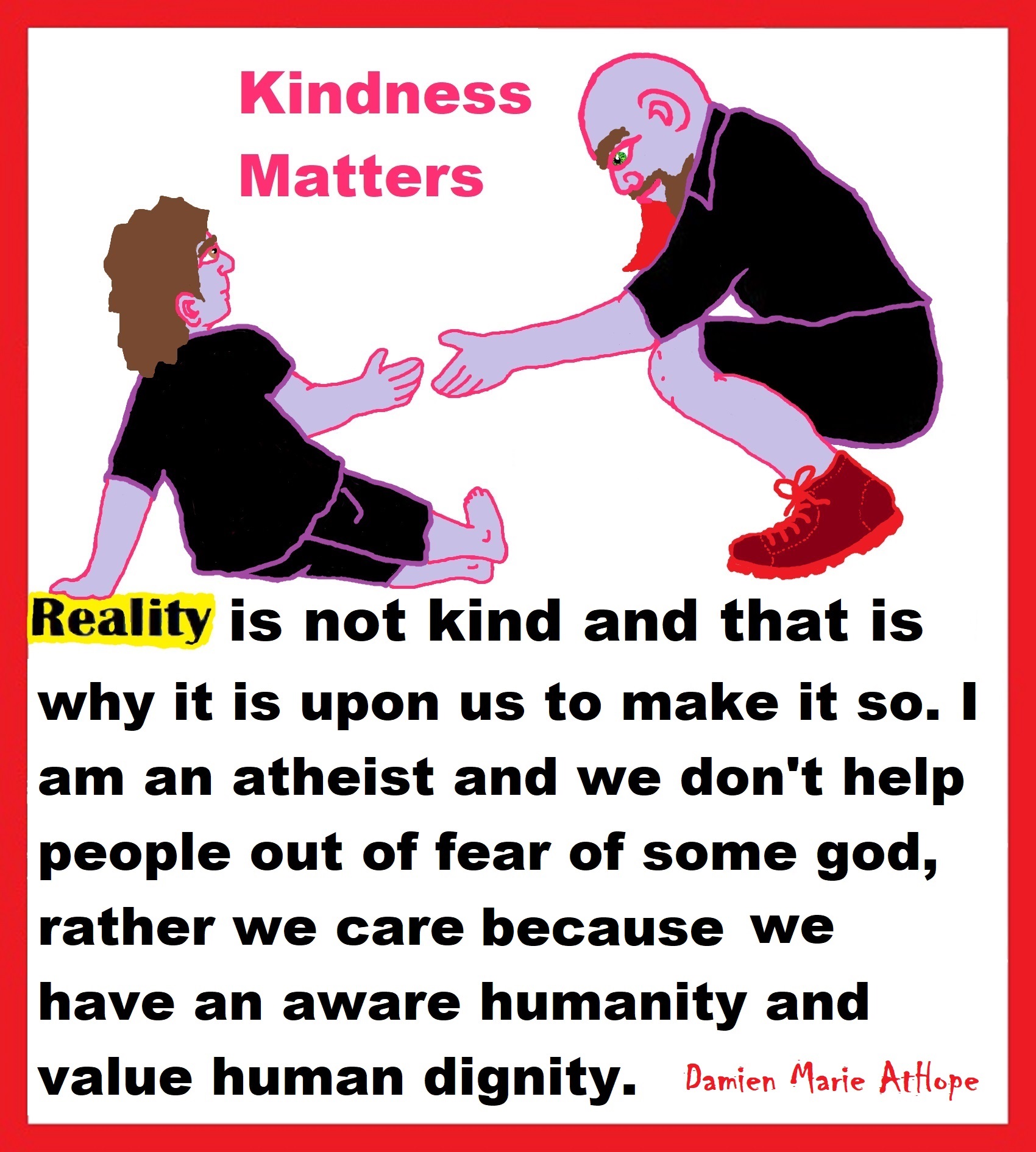
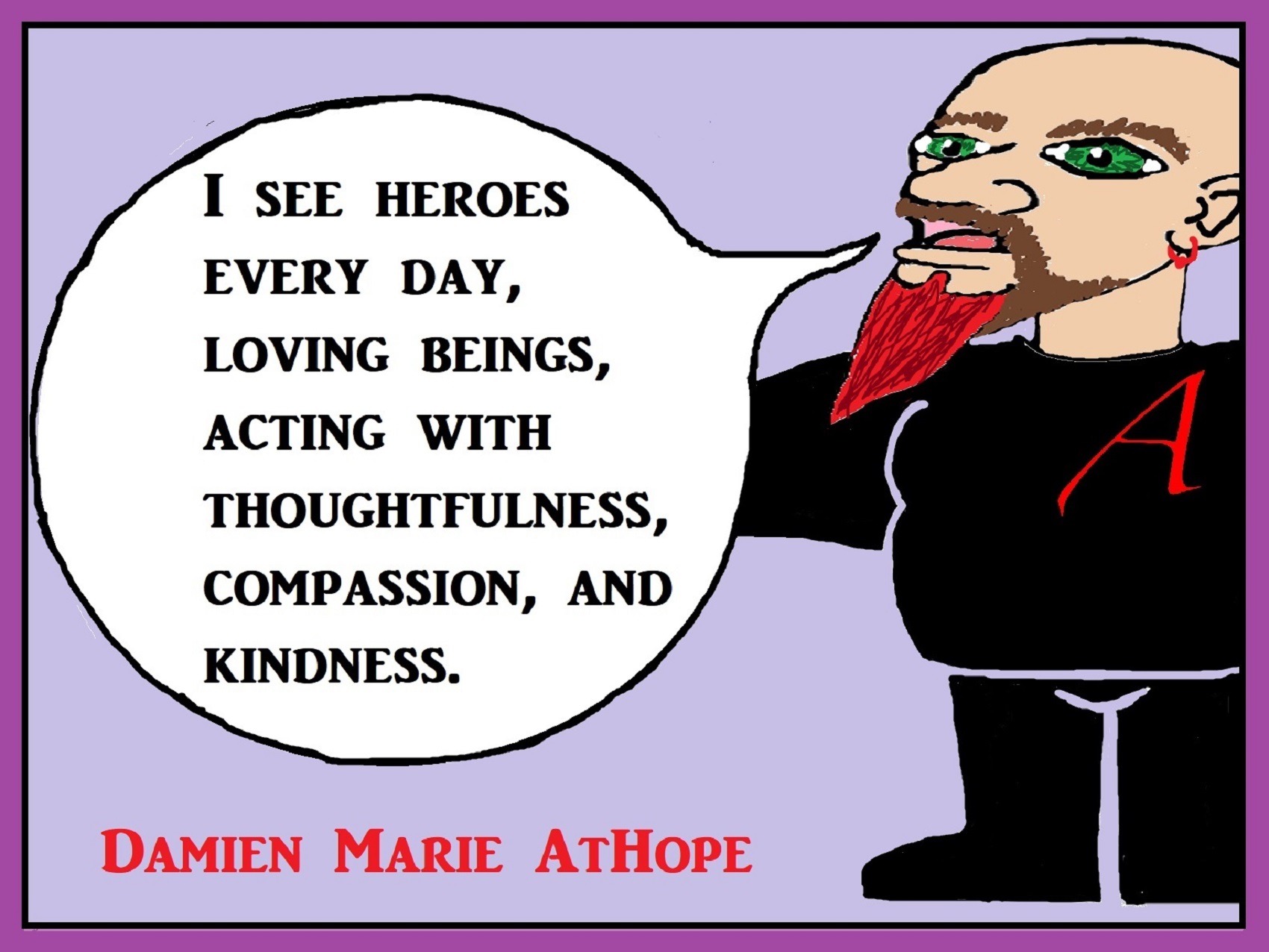

If one states they are a humanist and they believe in good, are they for or against a form of axiology or formal axiology?
Axiology is the philosophical study of goodness, or value, in the widest sense of these terms. It may be used as the collective term for ethics and aesthetics—philosophical fields that depend crucially on notions of value—or the foundation for these fields, and thus similar to value theory and meta-ethics. The word “axiology” (Greek: axios = good, worth, or value; logos = “science”) means “study of good”, “study of worth ” or “study of value.” The axiologists sought to characterize the notion of value in general, of which moral value is only one species. They argue (with notable differences between them), that goodness does not exclusively derive from the will, but exists in objective hierarchies. Formal axiology, the attempt to lay out principles regarding value with mathematical rigor, is exemplified by Robert S. Hartman’s Science of Value.
The fundamental principle of Hartman’s Science of Value, functions as an axiom, and can be stated in symbolic logic, is that a thing is good insofar as it exemplifies its concept. To put it another way, “a thing is good if it has all its descriptive properties.” This means, according to Hartman, that the good thing has a name, that the name has a meaning defined by a set of properties, and that the thing possesses all of the properties in the set. A thing is bad if it does not fulfill its description. If it doesn’t fulfill its definition it is terrible (awful, miserable.) A car, by definition, has brakes. A car which accelerates when the brakes are applied is an awful car, since a car by definition must have brakes. A horse, if we called it a car, would be an even worse car, with fewer of the properties of a car. The name we put on things is very important: it sets the norm for how we judge them.
If one states they are a humanist, are they for or against a form of universal or realism morality?
The 1948 Universal Declaration of Human Rights of the United Nations can be seen as an example of global efforts to bring a universalist, equal and common moral justice to all people, and Moral Universalism is, at least in part, the basis for modern human rights, and an integral part of any Humanist philosophy.
Human rights which are commonly considered a “deontological” concept, sometimes described as “duty-” or “obligation-” or “rule-” based ethics, because rules “bind you to your duty.” Which T. M. Scanlon advances the idea that human rights, can only be justified with reference to the consequences of having those rights.
Secular morality is the aspect of philosophy that deals with morality outside of religious traditions. Modern examples include humanism, freethinking, and most versions of consequentialism.
Consequentialism is the class of normative ethical theories holding that the consequences of one’s conduct are the ultimate basis for any judgment about the rightness or wrongness of that conduct. Thus, from a consequentialist standpoint, a morally right act (or omission from acting) is one that will produce a good outcome, or consequence.
Consequentialist theories differ in how they define moral goods.
Some argue that consequentialist theories are not necessarily mutually exclusive. For example, Robert Nozick argues for a theory that is mostly consequentialist, but incorporates inviolable “side-constraints” which restrict the sort of actions agents are permitted to do.
Consequentialists can and do differ widely in terms of specifying the Good. Some consequentialists are monists about the Good. Utilitarians, for example, identify the Good with pleasure, happiness, desire satisfaction, or “welfare” in some other sense. Other consequentialists are pluralists regarding the Good. Some of such pluralists believe that how the Good is distributed among persons (or all sentient beings) is itself partly constitutive of the Good, whereas conventional utilitarians merely add or average each person’s share of the Good to achieve the Good’s maximization.
Moreover, there are some consequentialists who hold that the doing or refraining from doing, of certain kinds of acts are themselves intrinsically valuable states of affairs constitutive of the Good. An example of this is the positing of rights not being violated, or duties being kept, as part of the Good to be maximized—the so-called “utilitarianism of rights”.
None of these pluralist positions erase the difference between consequentialism and deontology. For the essence of consequentialism is still present in such positions: an action would be right only insofar as it maximizes these Good-making states of affairs being caused to exist.
However much consequentialists differ about what the Good consists in, they all agree that the morally right choices are those that increase (either directly or indirectly) the Good. Moreover, consequentialists generally agree that the Good is “agent-neutral”. That is, valuable states of affairs are states of affairs that all agents have reason to achieve without regard to whether such states of affairs are achieved through the exercise of one’s own agency or not.
“Consequentialism”, as described by Peter Singer, “start not with moral rules, but with goals. They assess actions by the extent to which they further those goals.”
Consequentialism contains in itself no explanation for why pleasure or utility are morally good, or why consequences should matter to morality at all. Nor does consequentialism/deontology make any claims about how we know moral facts (if there are any). That is a meta-ethical question, so the question ‘how do we know that it is wrong to kill?’ is not a normative but a meta-ethical question.
Some consequentialists and deontologists are also moral realists. Some are not.
Moral Realism a similar position to universal morality, that certain acts are objectively right or wrong, independent of human opinion. that there exist such things as moral facts and moral values, and that these are objective and independent of our perception of them or our beliefs, feelings or other attitudes towards them. Therefore, moral judgments describe moral facts, which are as certain in their own way as mathematical facts. It is a cognitivist view in that it holds that ethical sentences express valid propositions (and are therefore “truth-apt” i.e. they are able to be true or false), and that they describe the state of the real world.
Moral Realism has the advantage of purportedly allowing the ordinary rules of logic to be applied straightforwardly to moral statements, (so that we can say, for example, that a moral belief is false or unjustified or contradictory in the same way we would about a factual belief). It also allows for the resolution of moral disagreements, because if two moral beliefs contradict one another, Moral Realism (unlike some other meta-ethical systems) says that they cannot both be right and so there should be some way of resolving the situation.
Two main variants of moral realism are:
Ethical Naturalism and Ethical Non-Naturalism.
Ethical Naturalism: holds that there are objective moral properties of which we have empirical knowledge, but that these properties are reducible to entirely non-ethical properties. It assumes cognitivism (the view that ethical sentences express propositions and can therefore be true or false), and that the meanings of these ethical sentences can be expressed as natural properties without the use of ethical terms.
Ethical Non-Naturalism: holds that ethical statements express propositions (in that sense it is also cognitivist) that cannot be reduced to non-ethical statements (e.g. “goodness” is indefinable in that it cannot be defined in any other terms). G. E. Moore claimed that a naturalistic fallacy is committed by any attempt to prove a claim about ethics by appealing to a definition in terms of one or more natural properties (e.g. “good” cannot be defined interms of “pleasant”, “more evolved”, “desired”, etc). Ethical Intuitionism is a variant of Ethical Non-Naturalism which claims that we sometimes have intuitive awareness of moral properties or of moral truths.
Critics have argued that, while Moral Realism may be able to explain how to resolve moral conflicts, it cannot explain how these conflicts arose in the first place. Others have argued Moral Realism posits a kind of “moral fact” which is non-material and unobservable (in the way as objective material facts are observable), and therefore not accessible to the scientific method.
Some philosophers who only believe in the physical world and don’t believe in anything immaterial say that they are also moral realists, but when they describes the type of morality that they believe in, often what they are talking about is the moral beliefs that people have acquired through evolution, which is called evolutionary moral realism. This includes the human instinct to care for the well being of others in one’s own group and the instinct to hold others accountable for transgressions against members of the group. A physicalist/materialist understanding of morality is therefore purely descriptive of human nature within a deterministic system.
The physicalist/materialist conception of morality differs from normative moral realism, in which one believes that things ought be a certain way or that people should act in a certain way because such states of affairs or actions would be better, not purely as a function of anything physical such as the instincts people have evolved to have, but at least partially for reasons that ultimately transcend the physical world. For example, if someone believes that oppressing others is always wrong even though humans have an instinctual predisposition to favor their own group over others, and this person does not otherwise explain how this belief is descriptive of something in the physical world, then this implies that this person believes in normative morality.
A similar concept to normative ethics is prescriptive ethics, which are those that are supposed to logically commit someone to act a certain way. For example, the normative statement “Murder is wrong” can be restated as “Do not murder”, which is prescriptive. This is similar to how doctors can prescribe medications for one to use. Essentially, prescriptive moral statements are prescribed to people in order for them to act morally. Normative statements simply state the relation a certain state of affairs has to rightness or wrongness without telling anyone how to act. The distinction between descriptive and normative/prescriptive morality is important to understand.
One study found that 56% of professional philosophers accept or lean towards moral realism and 28%: anti-realism. Cognitive psychologist Steven Pinker has argued that the game theoretic advantages of ethical behavior support the idea that morality is “out there” in a certain sense (as part of the evolutionary fitness landscape). Journalist Robert Wright has similarly argued that natural selection moves sentient species closer to moral truth as time goes on. Writer Sam Harris has also argued that ethics could be objectively grounded in an understanding of neuroscience. He has admitted to being committed to some form of moral realism (viz. moral claims can really be true or false) and some form of consequentialism (viz. the rightness of an act depends on how it affects the well-being of conscious creatures).
Being a moral anti-realist is compatible with having, and following, a moral theory: you just think you have reasons to be moral which are not based on mind-independent facts. For example, you might think convention gives you reason to be moral, where conventionalism is traditionally described as a form of non-realism. see: http://plato.stanford.edu/entries/moral-anti-realism/#ChaMorAntRea
A delineation of moral realism into a minimal form, a moderate form, and robust form has been put forward in the literature.
The robust model of moral realism commits moral realists to three theses:
The semantic thesis: The primary semantic role of moral predicates (such as “right” and “wrong”) is to refer to moral properties (such as rightness and wrongness), so that moral statements (such as “honesty is good” and “slavery is unjust”) purport to represent moral facts, and express propositions that are true or false (or approximately true, largely false, and so on).
The alethic thesis: Some moral propositions are in fact true.
The metaphysical thesis: Moral propositions are true when actions and other objects of moral assessment have the relevant moral properties (so that the relevant moral facts obtain), where these facts and properties are robust: their metaphysical status, whatever it is, is not relevantly different from that of (certain types of) ordinary non-moral facts and properties.
The minimal model, i.e. moral universalism, leaves off the metaphysical thesis, treating it as matter of contention among moral realists (as opposed to between moral realists and moral anti-realists). This dispute is not insignificant, as acceptance or rejection of the metaphysical thesis is taken by those employing the robust model as the key difference between moral realism and moral anti-realism.
Moral universalism (also called moral objectivism or universal morality) is the meta-ethical position that some system of ethics, or a universal ethic, applies universally, that is, for “all similarly situated individuals”, regardless of culture, race, sex, religion, nationality, sexual orientation, or any other distinguishing feature. Not all forms of moral universalism are absolutist, nor are they necessarily value monist; many forms of universalism, such as utilitarianism, are non-absolutist, and some forms may be value pluralist.
A moral theory must be able to solve and thus to be on solid philosophical grounds:
The ontological problem: an adequate theory must account for ethics without assuming the existence of anything that does not actually exist.
The epistemological problem: if we have knowledge of right and wrong, an adequate theory must explain how we acquire such knowledge.
The experience problem: An adequate theory about ethics must account for the phenomenology of moral experience.
The supervenience problem: An adequate theory must be consistent with the supervenient character of evaluative concepts.
The motivation problem: an adequate theory must account for the internal connection between moral belief and motivation (or if there is no such connection, it must offer an alternative account of how morality guides action).
The reason problem: An adequate theory must account for the place of reason in ethics.
The disagreement problem: An adequate theory must explain the nature of ethical disagreement.
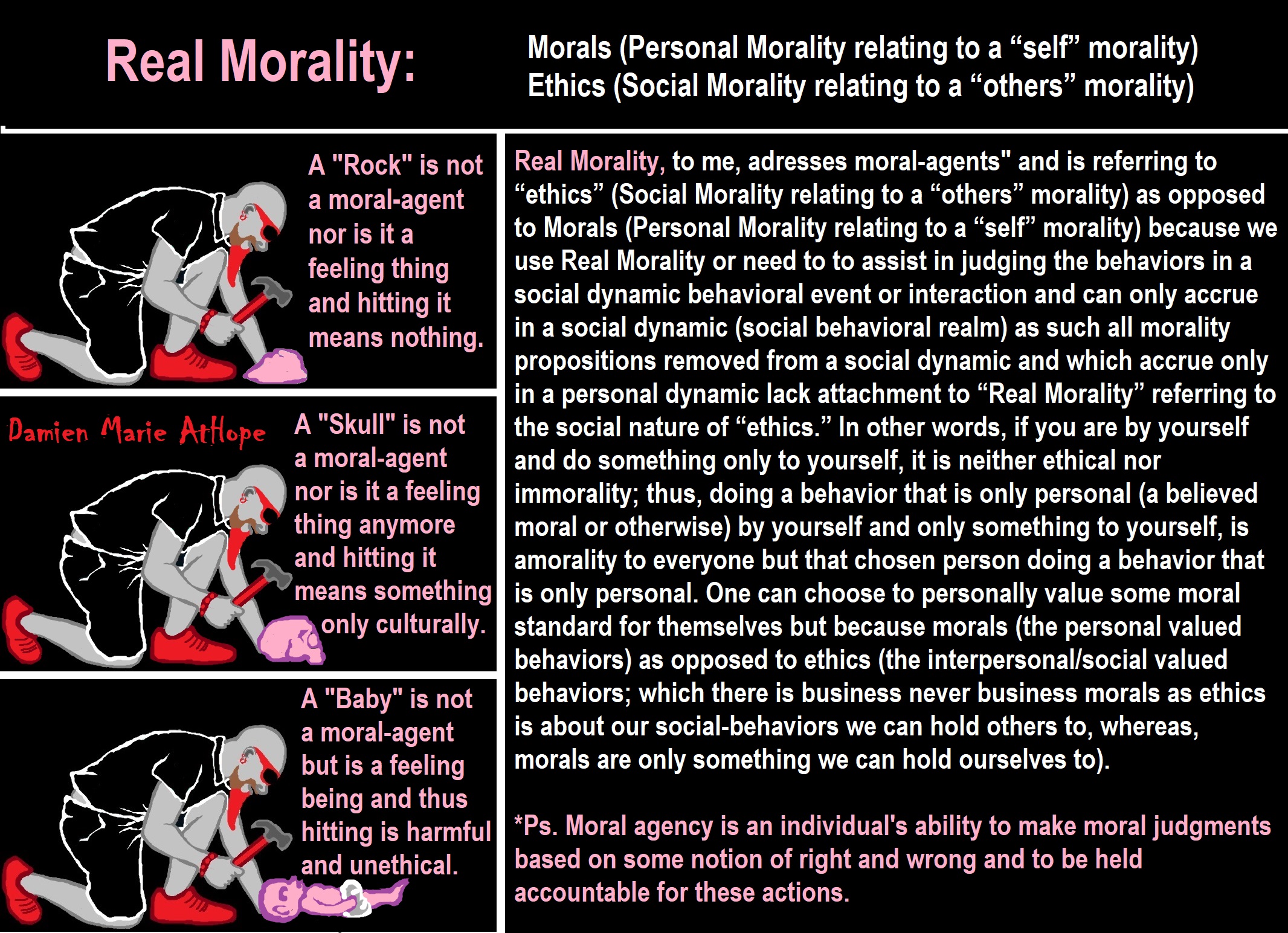

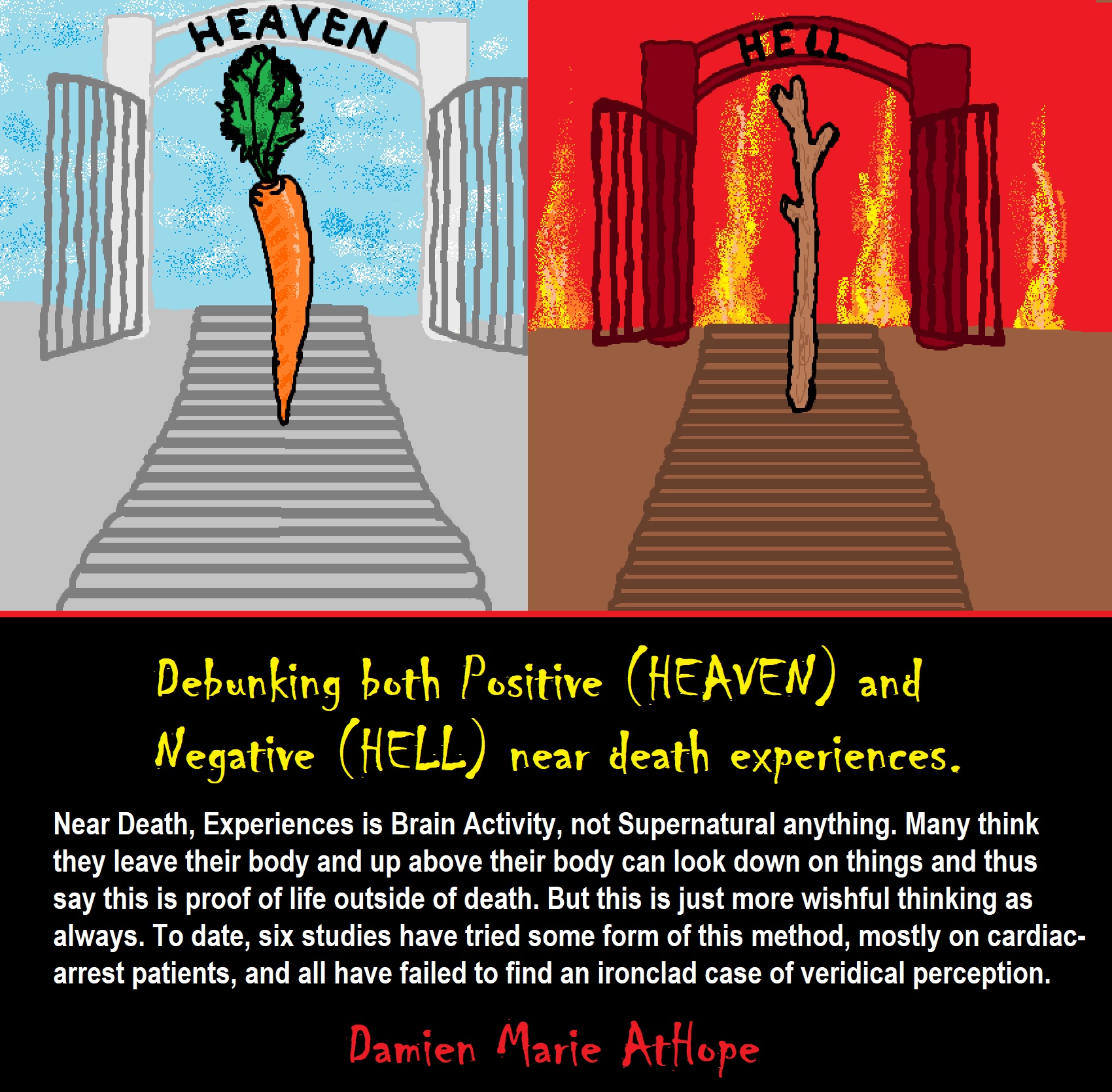
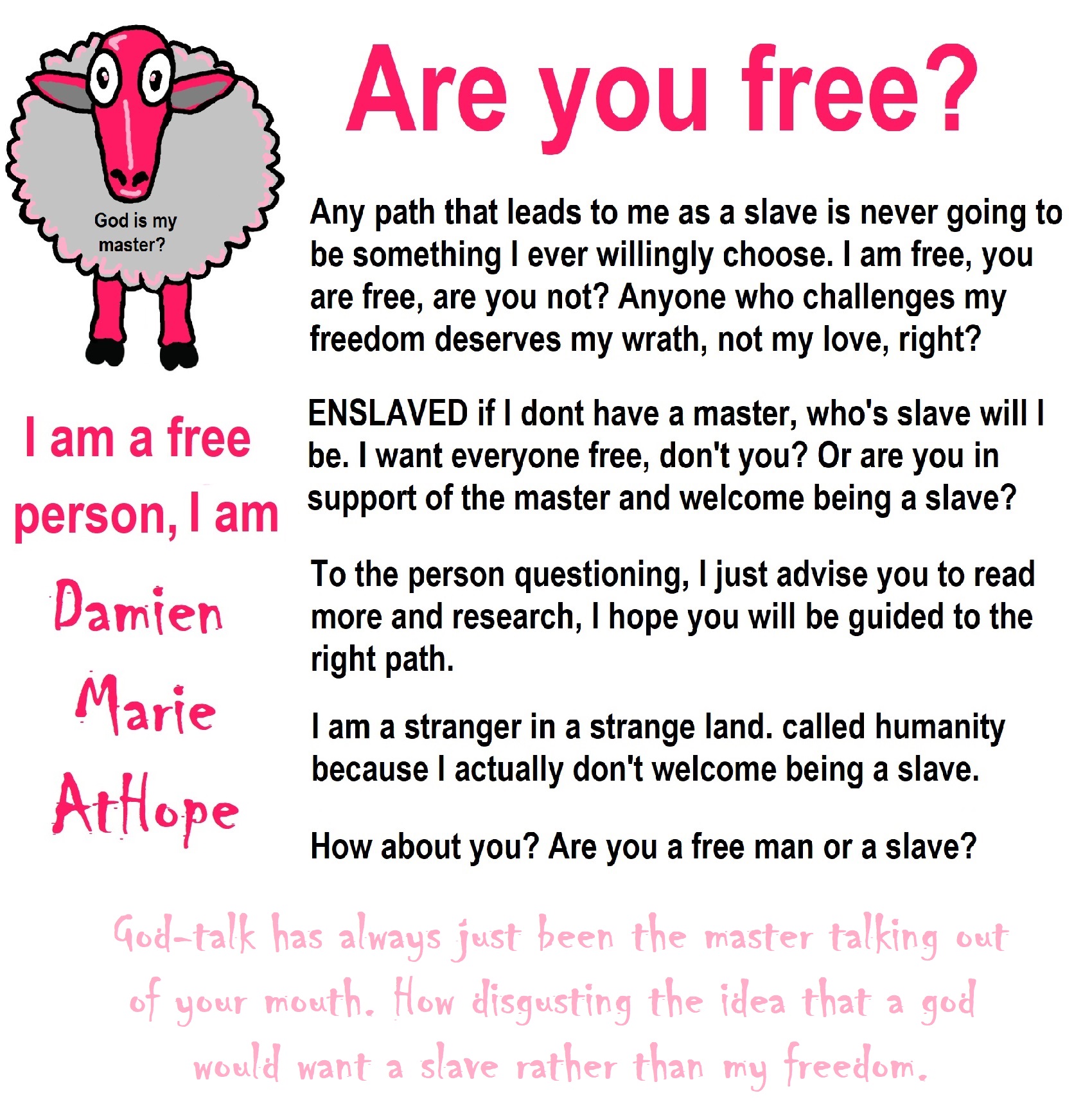

“Theists, there has to be a god, as something can not come from nothing.”
Well, thus something (unknown) happened and then there was something. This does not tell us what the something that may have been involved with something coming from nothing. A supposed first cause, thus something (unknown) happened and then there was something is not an open invitation to claim it as known, neither is it justified to call or label such an unknown as anything, especially an unsubstantiated magical thinking belief born of mythology and religious storytelling.

While hallucinogens are associated with shamanism, it is alcohol that is associated with paganism.
The Atheist-Humanist-Leftist Revolutionaries Shows in the prehistory series:
Show two: Pre-animism 300,000 years old and animism 100,000 years old: related to “Anarchism and Socialism”
Show tree: Totemism 50,000 years old: related to “Anarchism and Socialism”
Show four: Shamanism 30,000 years old: related to “Anarchism and Socialism”
Show five: Paganism 12,000 years old: related to “Anarchism and Socialism”
Show six: Emergence of hierarchy, sexism, slavery, and the new male god dominance: Paganism 7,000-5,000 years old: related to “Anarchism and Socialism” (Capitalism) (World War 0) Elite and their slaves!
Prehistory: related to “Anarchism and Socialism” the division of labor, power, rights, and recourses: VIDEO
Pre-animism 300,000 years old and animism 100,000 years old: related to “Anarchism and Socialism”: VIDEO
Totemism 50,000 years old: related to “Anarchism and Socialism”: VIDEO
Shamanism 30,000 years old: related to “Anarchism and Socialism”: VIDEO
Paganism 12,000 years old: related to “Anarchism and Socialism” (Pre-Capitalism): VIDEO
Paganism 7,000-5,000 years old: related to “Anarchism and Socialism” (Capitalism) (World War 0) Elite and their slaves: VIEDO
Paganism 5,000 years old: progressed organized religion and the state: related to “Anarchism and Socialism” (Kings and the Rise of the State): VIEDO
Paganism 4,000 years old: related to “Anarchism and Socialism” (First Moralistic gods, then the Origin time of Monotheism): VIEDO
I do not hate simply because I challenge and expose myths or lies any more than others being thought of as loving simply because of the protection and hiding from challenge their favored myths or lies.
The truth is best championed in the sunlight of challenge.
An archaeologist once said to me “Damien religion and culture are very different”
My response, So are you saying that was always that way, such as would you say Native Americans’ cultures are separate from their religions? And do you think it always was the way you believe?
I had said that religion was a cultural product. That is still how I see it and there are other archaeologists that think close to me as well. Gods too are the myths of cultures that did not understand science or the world around them, seeing magic/supernatural everywhere.
I personally think there is a goddess and not enough evidence to support a male god at Çatalhöyük but if there was both a male and female god and goddess then I know the kind of gods they were like Proto-Indo-European mythology.
This series idea was addressed in, Anarchist Teaching as Free Public Education or Free Education in the Public: VIDEO
Our 12 video series: Organized Oppression: Mesopotamian State Force and the Politics of power (9,000-4,000 years ago), is adapted from: The Complete and Concise History of the Sumerians and Early Bronze Age Mesopotamia (7000-2000 BC): https://www.youtube.com/watch?v=szFjxmY7jQA by “History with Cy“
Show #1: Mesopotamian State Force and the Politics of Power (Samarra, Halaf, Ubaid)
Show #2: Mesopotamian State Force and the Politics of Power
Show #3: Mesopotamian State Force and the Politics of Power (Uruk and the First Cities)
Show #4: Mesopotamian State Force and the Politics of Power (First Kings)
Show #5: Mesopotamian State Force and the Politics of Power (Early Dynastic Period)
Show #6: Mesopotamian State Force and the Politics of Power
Show #7: Mesopotamian State Force and the Politics of Power (Sargon and Akkadian Rule)
Show #9: Mesopotamian State Force and the Politics of Power (Gudea of Lagash and Utu-hegal)
Show #12: Mesopotamian State Force and the Politics of Power (Aftermath and Legacy of Sumer)

The “Atheist-Humanist-Leftist Revolutionaries”
Cory Johnston ☭ Ⓐ Atheist Leftist @Skepticallefty & I (Damien Marie AtHope) @AthopeMarie (my YouTube & related blog) are working jointly in atheist, antitheist, antireligionist, antifascist, anarchist, socialist, and humanist endeavors in our videos together, generally, every other Saturday.
Why Does Power Bring Responsibility?
Think, how often is it the powerless that start wars, oppress others, or commit genocide? So, I guess the question is to us all, to ask, how can power not carry responsibility in a humanity concept? I know I see the deep ethical responsibility that if there is power their must be a humanistic responsibility of ethical and empathic stewardship of that power. Will I be brave enough to be kind? Will I possess enough courage to be compassionate? Will my valor reach its height of empathy? I as everyone, earns our justified respect by our actions, that are good, ethical, just, protecting, and kind. Do I have enough self-respect to put my love for humanity’s flushing, over being brought down by some of its bad actors? May we all be the ones doing good actions in the world, to help human flourishing.
I create the world I want to live in, striving for flourishing. Which is not a place but a positive potential involvement and promotion; a life of humanist goal precision. To master oneself, also means mastering positive prosocial behaviors needed for human flourishing. I may have lost a god myth as an atheist, but I am happy to tell you, my friend, it is exactly because of that, leaving the mental terrorizer, god belief, that I truly regained my connected ethical as well as kind humanity.
Cory and I will talk about prehistory and theism, addressing the relevance to atheism, anarchism, and socialism.
At the same time as the rise of the male god, 7,000 years ago, there was also the very time there was the rise of violence, war, and clans to kingdoms, then empires, then states. It is all connected back to 7,000 years ago, and it moved across the world.
Cory Johnston: https://damienmarieathope.com/2021/04/cory-johnston-mind-of-a-skeptical-leftist/?v=32aec8db952d
The Mind of a Skeptical Leftist (YouTube)
Cory Johnston: Mind of a Skeptical Leftist @Skepticallefty
The Mind of a Skeptical Leftist By Cory Johnston: “Promoting critical thinking, social justice, and left-wing politics by covering current events and talking to a variety of people. Cory Johnston has been thoughtfully talking to people and attempting to promote critical thinking, social justice, and left-wing politics.” http://anchor.fm/skepticalleft
Cory needs our support. We rise by helping each other.
Cory Johnston ☭ Ⓐ @Skepticallefty Evidence-based atheist leftist (he/him) Producer, host, and co-host of 4 podcasts @skeptarchy @skpoliticspod and @AthopeMarie
Damien Marie AtHope (“At Hope”) Axiological Atheist, Anti-theist, Anti-religionist, Secular Humanist. Rationalist, Writer, Artist, Poet, Philosopher, Advocate, Activist, Psychology, and Armchair Archaeology/Anthropology/Historian.
Damien is interested in: Freedom, Liberty, Justice, Equality, Ethics, Humanism, Science, Atheism, Antiteism, Antireligionism, Ignosticism, Left-Libertarianism, Anarchism, Socialism, Mutualism, Axiology, Metaphysics, LGBTQI, Philosophy, Advocacy, Activism, Mental Health, Psychology, Archaeology, Social Work, Sexual Rights, Marriage Rights, Woman’s Rights, Gender Rights, Child Rights, Secular Rights, Race Equality, Ageism/Disability Equality, Etc. And a far-leftist, “Anarcho-Humanist.”
I am not a good fit in the atheist movement that is mostly pro-capitalist, I am anti-capitalist. Mostly pro-skeptic, I am a rationalist not valuing skepticism. Mostly pro-agnostic, I am anti-agnostic. Mostly limited to anti-Abrahamic religions, I am an anti-religionist.
To me, the “male god” seems to have either emerged or become prominent around 7,000 years ago, whereas the now favored monotheism “male god” is more like 4,000 years ago or so. To me, the “female goddess” seems to have either emerged or become prominent around 11,000-10,000 years ago or so, losing the majority of its once prominence around 2,000 years ago due largely to the now favored monotheism “male god” that grow in prominence after 4,000 years ago or so.
My Thought on the Evolution of Gods?
Animal protector deities from old totems/spirit animal beliefs come first to me, 13,000/12,000 years ago, then women as deities 11,000/10,000 years ago, then male gods around 7,000/8,000 years ago. Moralistic gods around 5,000/4,000 years ago, and monotheistic gods around 4,000/3,000 years ago.
To me, animal gods were likely first related to totemism animals around 13,000 to 12,000 years ago or older. Female as goddesses was next to me, 11,000 to 10,000 years ago or so with the emergence of agriculture. Then male gods come about 8,000 to 7,000 years ago with clan wars. Many monotheism-themed religions started in henotheism, emerging out of polytheism/paganism.

Damien Marie AtHope (Said as “At” “Hope”)/(Autodidact Polymath but not good at math):
Axiological Atheist, Anti-theist, Anti-religionist, Secular Humanist, Rationalist, Writer, Artist, Jeweler, Poet, “autodidact” Philosopher, schooled in Psychology, and “autodidact” Armchair Archaeology/Anthropology/Pre-Historian (Knowledgeable in the range of: 1 million to 5,000/4,000 years ago). I am an anarchist socialist politically. Reasons for or Types of Atheism
My Website, My Blog, & Short-writing or Quotes, My YouTube, Twitter: @AthopeMarie, and My Email: damien.marie.athope@gmail.com

